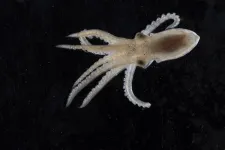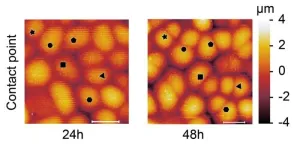The study builds upon previous studies that involved inserting a highly stable segment of the coronavirus spike protein into the measles vaccine or mumps vaccine.
In a paper publishing this week in Proceedings of the National Academy of Sciences, scientists at The Ohio State University report on a new MMS vaccine candidate – for Measles, Mumps and SARS-CoV-2 – delivered via the nose that provides broad and long-lasting protection against COVID-19 infection.
In two rodent models, the intranasal vaccine triggered a strong neutralizing antibody response plus protection in mucosal areas lining the nose and lungs, and prevented disease symptoms such as weight loss and tissue damage.
Experiments suggested the lifelong immunity to measles and mumps provided by the measles-mumps-rubella (MMR) vaccine would likely translate into prolonged protection against COVID-19 in people vaccinated with the MMS: In hamsters, antibodies against SARS-CoV-2 induced by the MMS vaccine lasted at least four months without any sign of decline.
The trivalent vaccine developed in this study protected against the ancestral SARS-CoV-2 virus and two variants: delta, which was associated with more severe disease, and omicron BA.1, which spread much faster.
“The beauty here is we already know the MMR is used in children, so we’re building on a 50-year safety record,” said Jianrong Li, senior author of the study and a professor of virology in Ohio State’s Department of Veterinary Biosciences and Infectious Diseases Institute. “We inserted three different spikes that allow broad neutralizing antibodies to protect against the different variants of concern of SARS-CoV-2. It’s quite promising, and would be a fantastic new type of vaccine to prevent COVID-19.”
In addition to the promising platform and the bonus mucosal protection that comes with intranasal delivery, the technique used to create the coronavirus antigens that stimulate immunity contributes to the vaccine candidate’s effectiveness, Li said.
Researchers used a prefusion version of each variant’s spike protein – the shape it is in on the viral surface before the virus infects a cell. The protein, called preS-6P, was locked into this form by changing six of its amino acids to prolines. In a previous study published in PNAS, Li’s lab found that preS-6P is much more effective in inducing immune responses than preS-2P, a spike locked by two prolines. Currently, all FDA-approved COVID-19 vaccines use the preS-2P.
“The efficacy and longevity of COVID-19 vaccines will be much higher if preS-6P is used,” Li said.
Using one measles strain and two mumps strains, the team inserted the antigens in the same location in each platform virus’s genome to enable expression of the optimal amount of spike protein and robust replication of the platform viruses – both actions needed to trigger a strong immune response.
Tests in mice used to model an immune response showed intranasal delivery of the MMS vaccine generated neutralizing antibodies in the bloodstream against the three variants as well as specialized antibodies called IgA on mucosal surfaces of the airways and tissue-resident T cells in lungs that help boost clearance of viral particles.
“These are two main advantages of intranasal vaccines: generating IgA in the nose and lung to prevent the virus from traveling to other organs or the blood, and producing tissue-resident T cells in the lung to rapidly mount an effective immune response to previously encountered pathogens, in this case SARS-CoV-2,” Li said. “The mRNA vaccines injected intramuscularly primarily generate antibodies in the bloodstream, but do not produce these types of added protection for the lungs.”
Experiments comparing the trivalent vaccine candidate to a vaccine against a single omicron variant showed the single-variant version was not able to produce antibodies that neutralize other coronavirus strains.
“With the insertion of the three spike proteins, the MMS produces antibodies that neutralize other strains – that supports the concept of using a trivalent vaccine to produce broader immunity against different strains,” said co-first author Jiayu Xu, a graduate student in Li’s lab.
Immunization of golden Syrian hamsters with the trivalent vaccine produced similarly high levels of neutralizing antibodies as in the mice. When the hamsters were infected with the parental, delta and omicron strains of the virus, multiple measures compared to controls showed they were protected from getting sick: a lack of clinical symptoms, only minor changes to tissue in the airways and undetectable levels of viral particles present in the lungs.
“The MMS platform is also readily and rapidly adaptable to new variants such as XBB.1.16 and EG.5, which are currently circulating in the human population,” said co-first author Yuexiu Zhang, a graduate student in Li’s lab.
Li said there are additional options to consider, including adding rubella back into the platform and, potentially, inserting more than three prefusion spike proteins or other coronavirus proteins into the vaccine to further broaden protective immunity.
“We envision incorporating it into a routine immunization program for children and to provide long-term immunity against COVID-19 for adults,” he said.
Ohio State has filed a patent application on measles virus-based SARS-CoV-2 vaccine candidates. Ohio State and Nationwide Children’s Hospital also filed a patent application on mumps virus-based SARS-CoV-2 vaccine candidates.
The study was supported by grants from the National Institutes of Health, the National Cancer Institute and Ohio State’s College of Veterinary Medicine.
Additional co-authors include Panke Qu, Mohamed Shamseldin, Sung Yoo, Jesse Hall, John Evans, Mostafa Eltobgy, Mijia Lu, Michelle Chamblee, Xueya Liang, Amal Amer, Jacob Yount, Prosper Boyaka, Shan-Lu Liu and Purnima Dubey of Ohio State; Mark Peeples, Jack Misny, Ilada Thongpan and Mahesh KC of the Abigail Wexner Research Institute at Nationwide Children’s Hospital; and Chengjin Ye and Luis Martinez-Sobrido of the Texas Biomedical Research Institute. Jason McLellan of the University of Texas at Austin discovered the preS-6P used in this study.
#
Contact: Jianrong Li, Li.926@osu.edu
Written by Emily Caldwell, Caldwell.151@osu.edu; 614-292-8152
END




